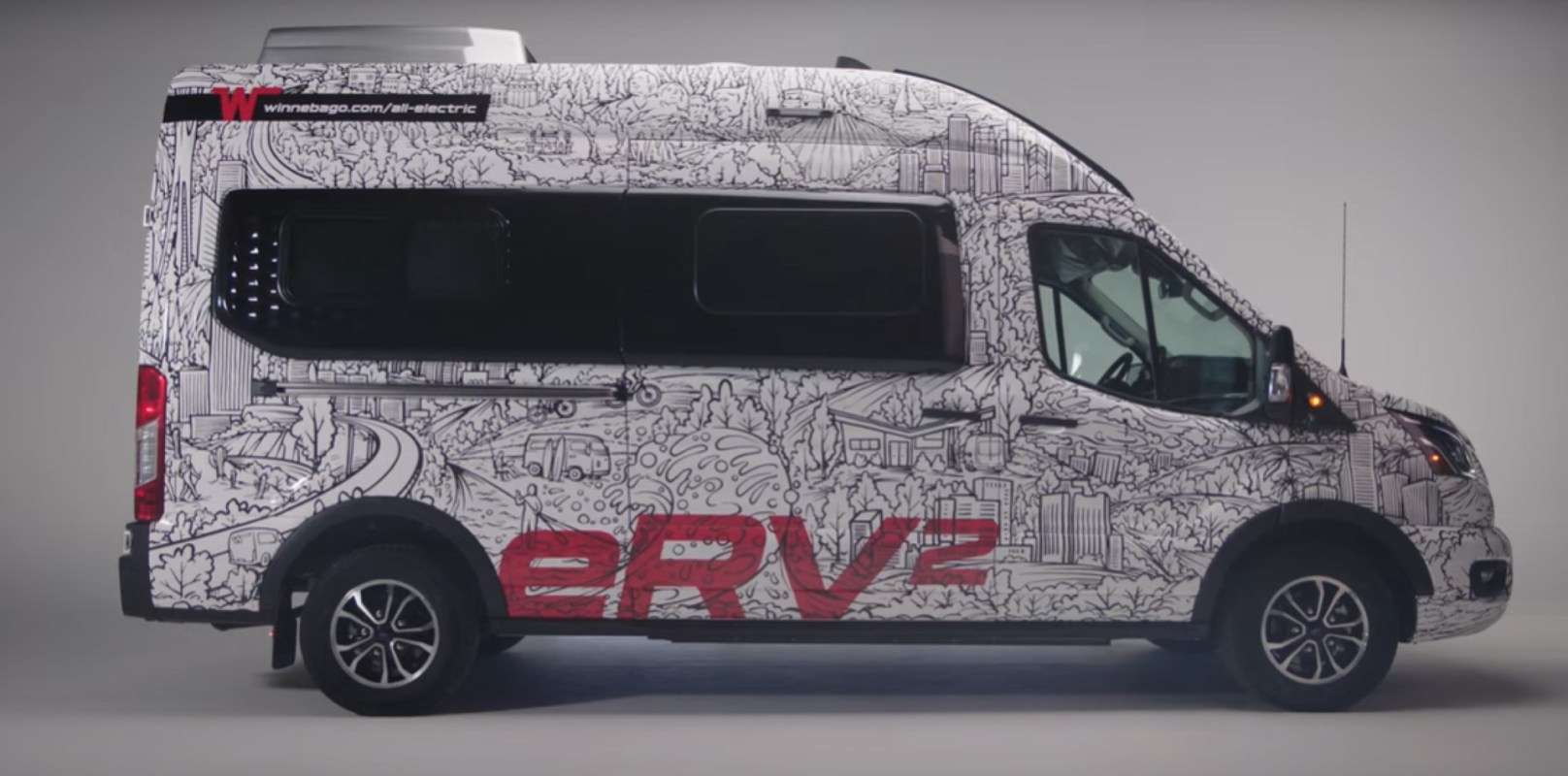Winnebago is showcasing its new eRV2, a totally electric camper van concept, which is much more advanced than its previous 2018 attempt and even more improved from its first eRV concept released last year.
The RV has an approximate range of 108 miles and contains a 48-volt, 15-kilowatt-hour battery pack underneath the floor that, with the help of its 900-watt solar panels, can power the interior amenities for up to seven days — no extra power needed. Winnebago estimates that campers would need just four hours of daily sunlight for the vehicle to last off the grid for a week.
Since electric vehicles, including electric RVs, can have zero tailpipe emissions, they can greatly help reduce air pollution. And their electric charge replaces the need for gas, which contributes to the overheating of our planet.
Currently, more than 11 million U.S. households own an RV, meaning that "e-RVing" can eliminate a lot of pollution over time — particularly in areas with low-polluting electricity energy sources.
In 2019, Winnebago created its Advanced Technology Group to learn about how its future products could benefit from newer technologies, like electrification.
Then, in November 2022, the company opened its new facility and broadened resources for next-generation technology innovation in the RV and marine industries.
"Consumer demand is driving electric power applications across many fronts, and we believe RV consumers are poised to benefit from the enhanced features and usability that electrified and connected RV products will provide," Ashis Bhattacharya, a senior vice president at the company, told Motor 1.
Usually, a traditional RV needs several systems and fuels to create a complete camping experience (think: propane for heat and cooking, a generator for electricity, batteries for power backup, and, sometimes, electrical hookups at campsites). But what's groundbreaking about eRVs is that everything works cohesively on one electricity source.
In addition to its high-tech solar panels, the eRV2 also features finishes that help with thermal and sound insulation, such as woolen wall appliques and recycled cork-rubber flooring.
While it isn't clear when the concept will become reality on the road — Winnebago and Ford first need to raise the vehicle's range so RV-ers can go at least three hours between charges — you can now sign up to stay updated on the progress. And, if you happen to live in Florida, California, or Washington, keep an eye out for the maker's pilot program, which offers the chance to test the eRV2 out in person.
Join our free newsletter for weekly updates on the coolest innovations improving our lives and saving our planet.









